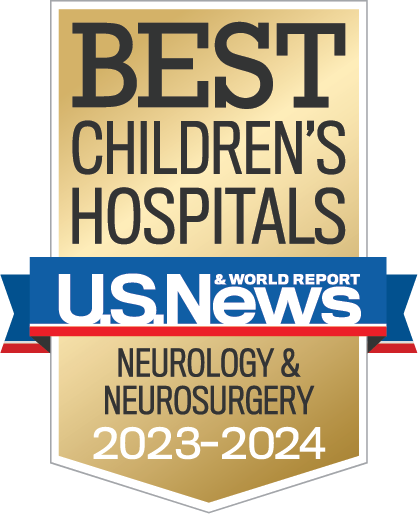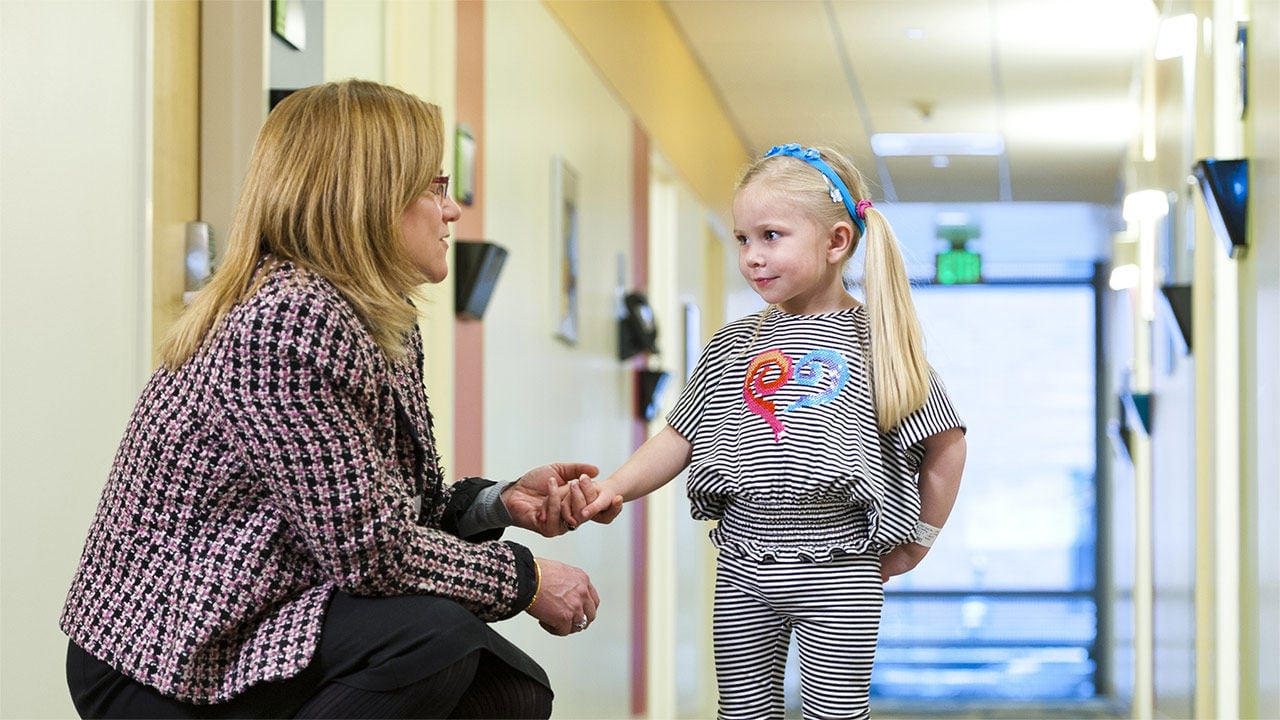- Doctors & Departments
-
Conditions & Advice
- Overview
- Conditions and Symptoms
- Symptom Checker
- Parent Resources
- The Connection Journey
- Calm A Crying Baby
- Sports Articles
- Dosage Tables
- Baby Guide
-
Your Visit
- Overview
- Prepare for Your Visit
- Your Overnight Stay
- Send a Cheer Card
- Family and Patient Resources
- Patient Cost Estimate
- Insurance and Financial Resources
- Online Bill Pay
- Medical Records
- Policies and Procedures
- We Ask Because We Care
Click to find the locations nearest youFind locations by region
See all locations -
Community
- Overview
- Addressing the Youth Mental Health Crisis
- Calendar of Events
- Child Health Advocacy
- Community Health
- Community Partners
- Corporate Relations
- Global Health
- Patient Advocacy
- Patient Stories
- Pediatric Affiliations
- Support Children’s Colorado
- Specialty Outreach Clinics
Your Support Matters
Upcoming Events
Mental Health Town Hall
Tuesday, April 23, 2024Join Children’s Hospital Colorado pediatric experts for a virtual...
-
Research & Innovation
- Overview
- Clinical Trials
- Q: Pediatric Health Advances
- Discoveries and Milestones
- Training and Internships
- Academic Affiliation
- Investigator Resources
- Funding Opportunities
- Center For Innovation
- Support Our Research
- Research Areas

It starts with a Q:
For the latest cutting-edge research, innovative collaborations and remarkable discoveries in child health, read stories from across all our areas of study in Q: Advances and Answers in Pediatric Health.


Seizure Safety Precautions for Parents of Kids with Epilepsy
We provide comprehensive care for developmental and nervous system disorders ranging from complex neurosurgery to cognitive and behavioral counseling.


How to make a seizure safety plan
Having a child with epilepsy can be challenging, but it's not unmanageable. This guide from the Neuroscience Care Team at Children's Hospital Colorado and The Epilepsy Foundation of Colorado and Wyoming help you develop a plan specific to your child's seizure needs.
What to include in your seizure safety plan
- Travel
- Babysitting
- Emergencies
- School or daycare
- Medical ID bracelets and necklaces
How to monitor your child's seizures
- Record the frequency of your child's seizures on a calendar or use a free seizure tracker
app on your smart device. - Ensure your child is getting their mediation daily and on time.
- Monitor the side effects your child experiences with their seizure medication.
- If you have questions about your child's seizures, record a video for your child's neurologists to review.
Be prepared for emergencies
The average seizure in a child who has epilepsy is not a medical emergency. It ends naturally by itself. But every rule has exceptions, and that's true of epilepsy as well. Please speak with your child's neurologist to discuss a plan for seizure emergencies.
When to call 911
Call 911 if your child is experiencing any of these emergency symptoms:
- Not breathing or turning blue. (Cyanosis, or turning blue, is common with seizures; even so, check fingertips for color. If fingers look okay, your child should be fine. If you are unsure, always call 911.)
- Generalized tonic-clonic seizures (also called a "grand mal" seizure) that last longer than five minutes, especially after administration of rescue medications. During tonic-clonic seizures, a child may suddenly lose consciousness, fall to the floor (if standing) and stiffen. The child's arms and legs will shake.
- Repeated seizures without any response to touch and sound between seizures
- Fall with concern for injury before, during or after seizure
- Seizures during pregnancy
- Seizures in water, such as a pool or bathtub
- No response to painful stimuli after seizures, especially if accompanied by facial twitching, mouth movement or eye fluttering, which may indicate non-convulsive status epileptics
- Neurological symptoms after the seizure, such as weakness on one side, that are not usually present or lasting longer than usual
- Vomiting during a seizure, followed by unconsciousness or not breathing properly
When to call your neurologist
Call your neurologist if your child experiences any of the following:
- Previous history of seizures, coupled with fever (an underlying illness can trigger seizures)
- Mental decline (your child is not acting in his or her usual way)
- An unexpected seizure or a seizure outside your child's normal pattern
Seizure home care advice
These tips will help you care for your child when they have a seizure at home.
- Keep calm. You cannot stop a seizure.
- Do not try to hold your child or stop their movements.
- Stay with your child until they are fully awake.
- Remove harmful objects near your child or stand in front of dangerous areas such as stairways. If needed, gently move your child away from dangerous areas.
- Know that your child may not hear you or be aware of what he or she is doing.
- Write down how long the seizure lasts and what your child did. After your child rests, ask what he or she remembers about the seizure.
- Call your child's doctor to let them know that a seizure occurred.
Educate others about seizure safety for kids
Share this video with your family members, friends and teachers so that they can be prepared if your child or another child has a seizure.
Seizure safety for children at home and away
Seizures can occur anywhere that your child goes. It's important to plan ahead of time for how you, or others, can protect your child during a seizure at specific locations or during activities – like swimming or sports.
School or daycare safety information
- Always inform your child's school, daycare and coach that your child has seizures. They will most likely ask you to fill out a "My Seizure Plan," form found on the Epilepsy Foundation website, or a "Seizure Preparedness Plan for Back to School," form from diastat.com.
- One of these forms needs to be filled out or updated every year so that your child's school can be prepared and educated in the event your child has a seizure.
- Please inform your school nurse that they are always welcome to call our neurology team at 720-777-6895 if they have any questions or concerns. You must fill out a consent form for us to be able to speak with them.
Water safety for children with seizures
Your child could drown during a seizure that occurs in water – even when bathing. These tips will help you keep your child safe in situations that involve water.
- Use one-on-one adult supervision for swimming and baths.
- Encourage your child to tell an adult that they have seizures.
- Have your child take showers instead of baths.
- If seizures are frequent, buy a plastic shower chair and a hand-held water head.
- Remove the drain plug in tub/shower combos because during a seizure your child could fall on it and engage the plug.
- Have a no-locked-bathroom-door policy.
Water sport safety tips for kids
Water sports, including swimming, jet-ski riding, windsurfing and sailing, are risky for people with epilepsy, but with a few accommodations they also can be safely pursued in most cases.
Water sport safety tips:
- Your child should never do water sports alone.
- Always have your child wear a medical alert bracelet or necklace.
- A child with epilepsy — or any child — should never swim alone or be on a boat or close to water (including backyard wading pools) without a flotation device or life jacket.
- We recommend one-to-one supervision for children near water.
- Make sure an adult is present who knows your child has epilepsy and is a good enough swimmer to help if your child has a seizure in the water.
- Tell lifeguards or swimming instructors at local pools or beaches that your child has seizures.
- If a child has a seizure in water, remove them immediately from the water, or bring them in to shallow water. Then, he or she should be checked by a lifeguard or parent. If there is any possibility that water has been swallowed or breathed into the lungs, get a medical checkup.
Heat safety for children with seizures
If your child has uncontrolled seizures, be very careful around heat, flames or hot liquids.
- Cook on the back burner — your child is less likely to lean on the burner or turn over the soup during a seizure.
- Have your child use a microwave for cooking; this is the safest for children with seizures.
- Consider serving hot things right off the stove onto plates.
- Make sure cups of hot liquids, like hot chocolate, have lids to avoid burs from spills.
- Don't smoke, which is good advice for other reasons as well.
- Set the maximum house hot water temperature to 110 degrees Fahrenheit.
- Put guards on open fireplaces, wood stoves or radiators.
Heights safety for children with seizures
Seizures while high off the ground could increase your child's risk for injury. Consider these items before allowing your child to climb to a high point.
- Going up and down stairs is a reasonable risk. If your child's seizures are not in control, then your child should not work on ladders or unprotected heights for prolonged periods.
- If your child falls with some of his or her seizures, fall-proof your child's environment. Put in carpets, cover sharp corners, use a stair gate, if necessary, and consider having them wear a protective helmet in some circumstances.
Equipment and power tool safety for children with seizures
- Ensure your cutting, chopping and drilling equipment has safety guards; otherwise, do not use them around your child if their seizures are not fully controlled.
- Do not use mowers lacking automatic stop switches or chainsaws around your child.
Sports safety for children with seizures
The Epilepsy Foundation has the following recommendations for sports safety for your child. The below summarizes key details, but please read Safety with Exercise and Sports for more information. Always ask your neurologist if a certain activity or sport is appropriate for your child.
- Recreational activities can improve both mental and physical health for people with epilepsy.
- Very rarely, exercise is a trigger for seizure activity, but for the vast majority of epilepsy patients, the benefits of exercise far outweigh the risks. However, certain activities need special accommodations or should be avoided.
- The greater the frequency and severity of an individual's seizures, the greater the need for that person to limit or modify athletic activities.
Contact sports and recreational activity safety
Here are a few things to consider when deciding what sports or recreational activities are best for your child:
- Though some sports may be safe for some people with seizures, they may not be safe for all seizure patients. Contact your child's neurologist if your child is considering playing a sport.
- Recreational activities are very important for socializing and happiness. Achieving the balance between a safe life and an active life is possible by just making a few adjustments.
Your child should do the following during sporting activities:
- Always have a "buddy" for activities that require considerable exertion or have a high risk of injury.
- Take frequent breaks and drink plenty of water.
- Wear protective clothing (elbow or knee pads, helmet, protective eyeglasses or goggles) whenever possible.
- Avoid busy streets when bike riding; ride on bike paths or side streets.
- Always wear a medical ID bracelet or necklace, or carry a medical ID card.
Learn more about the Neurology Program at Children's Hospital Colorado.



 720-777-0123
720-777-0123




